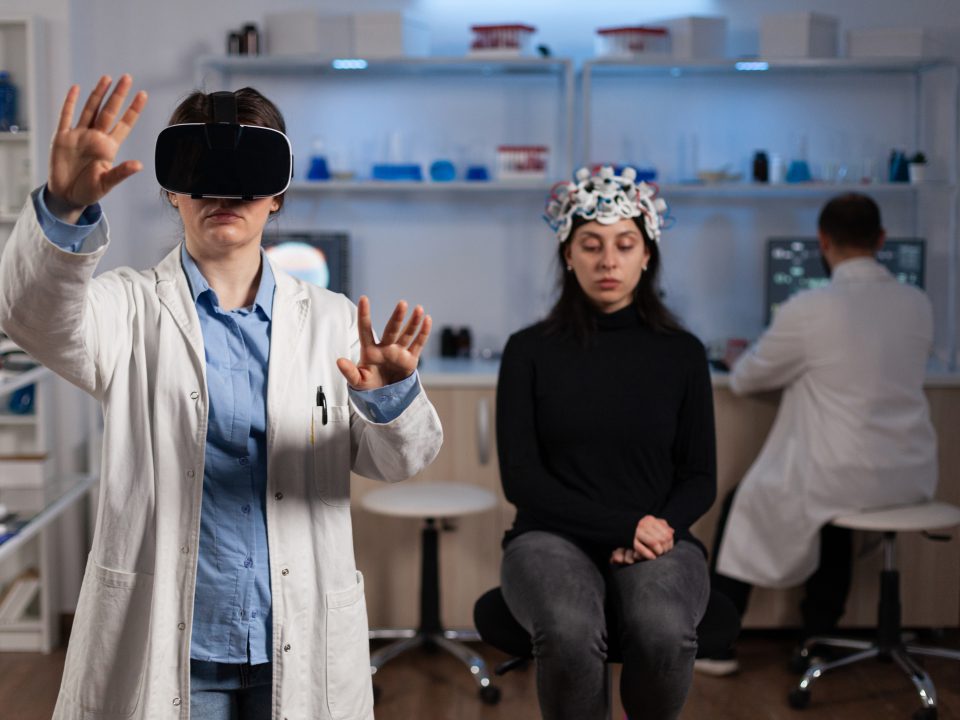Introduction
Immersive learning through Virtual Reality (VR) and Augmented Reality (AR) is transforming medical training programs worldwide. By integrating these technologies, medical education is becoming more interactive, engaging, and effective, enabling students and professionals to gain hands-on experience in a risk-free environment. This article explores the application, benefits, challenges, and future directions of VR and AR in medical training, providing insights into how these technologies are reshaping healthcare education.
The Evolution of VR and AR in Medical Training
The adoption of VR and AR in medical training represents a significant shift from traditional educational models to immersive learning environments. VR immerses users in a completely virtual world, while AR overlays virtual objects onto the real world, enhancing the physical environment with digital information. These technologies have found applications in various aspects of medical training, from anatomical education to surgical simulation, offering an innovative approach to learning and skill development.
AR for Anatomical Visualization
AR technology has revolutionized anatomical visualization by enabling students to see and interact with 3D models of human anatomy overlaid onto their surroundings. Tools like Microsoft's HoloLens allow learners to explore complex anatomical structures in detail from all angles, providing a deeper understanding of human biology. AR applications can also simulate the effects of diseases on the body, offering insights into pathophysiology and diagnostics that are difficult to grasp through textbooks alone.
Benefits of Immersive Learning in Medical Training
- Enhanced Engagement and Retention: Immersive technologies make learning more engaging, helping students retain information more effectively than traditional learning methods.
- Safe Learning Environment: VR and AR provide a safe platform for practicing medical procedures, where mistakes are part of the learning process and have no real-world consequences.
- Realistic Experience: These technologies offer realistic experiences that closely mimic actual medical scenarios, preparing students for real-life situations in a controlled environment.
- Accessibility: Virtual and augmented reality applications can be accessed from anywhere, breaking down geographical and logistical barriers to medical education.
Challenges Facing Immersive Learning
Despite its benefits, the implementation of VR and AR in medical training faces several challenges:
- Cost and Accessibility: The high cost of VR and AR equipment and software development makes it difficult for some institutions to adopt these technologies.
- Technical Issues: Technical limitations, such as resolution and user interface design, can impact the quality of the learning experience.
- Content Development: Creating accurate and comprehensive medical training content for VR and AR is resource-intensive and requires constant updating to reflect the latest medical practices and discoveries.
- Adaptation: Integrating immersive learning into existing medical curricula requires significant effort and adaptation by educational institutions.
Future Directions of Immersive Learning in Healthcare
The future of immersive learning in healthcare is promising, with advancements in technology continually enhancing the quality and accessibility of VR and AR training programs. Emerging trends include:
- Integration with AI: Combining VR and AR with artificial intelligence (AI) can provide personalized learning experiences, adapt content to the learner's progress, and simulate more complex and dynamic medical scenarios.
- Wearable Technology: The development of more compact and affordable wearable AR and VR devices could increase accessibility and facilitate the integration of immersive learning into daily medical training.
- Collaborative Learning: VR and AR can enable collaborative learning environments where students and professionals from different locations can interact and learn together in a virtual space.
Conclusion
The use of Virtual and Augmented Reality in medical training programs represents a paradigm shift in healthcare education, offering immersive learning experiences that enhance knowledge retention, skill acquisition, and preparedness for real-world medical situations. While there are challenges to overcome, the continued advancement of these technologies and their integration into medical training curricula promise to further enhance the effectiveness and accessibility of healthcare education. As VR and AR technologies evolve, they will undoubtedly continue to play a crucial role in shaping the future of medical training, making it more interactive, engaging, and effective for the next generation of healthcare professionals.


